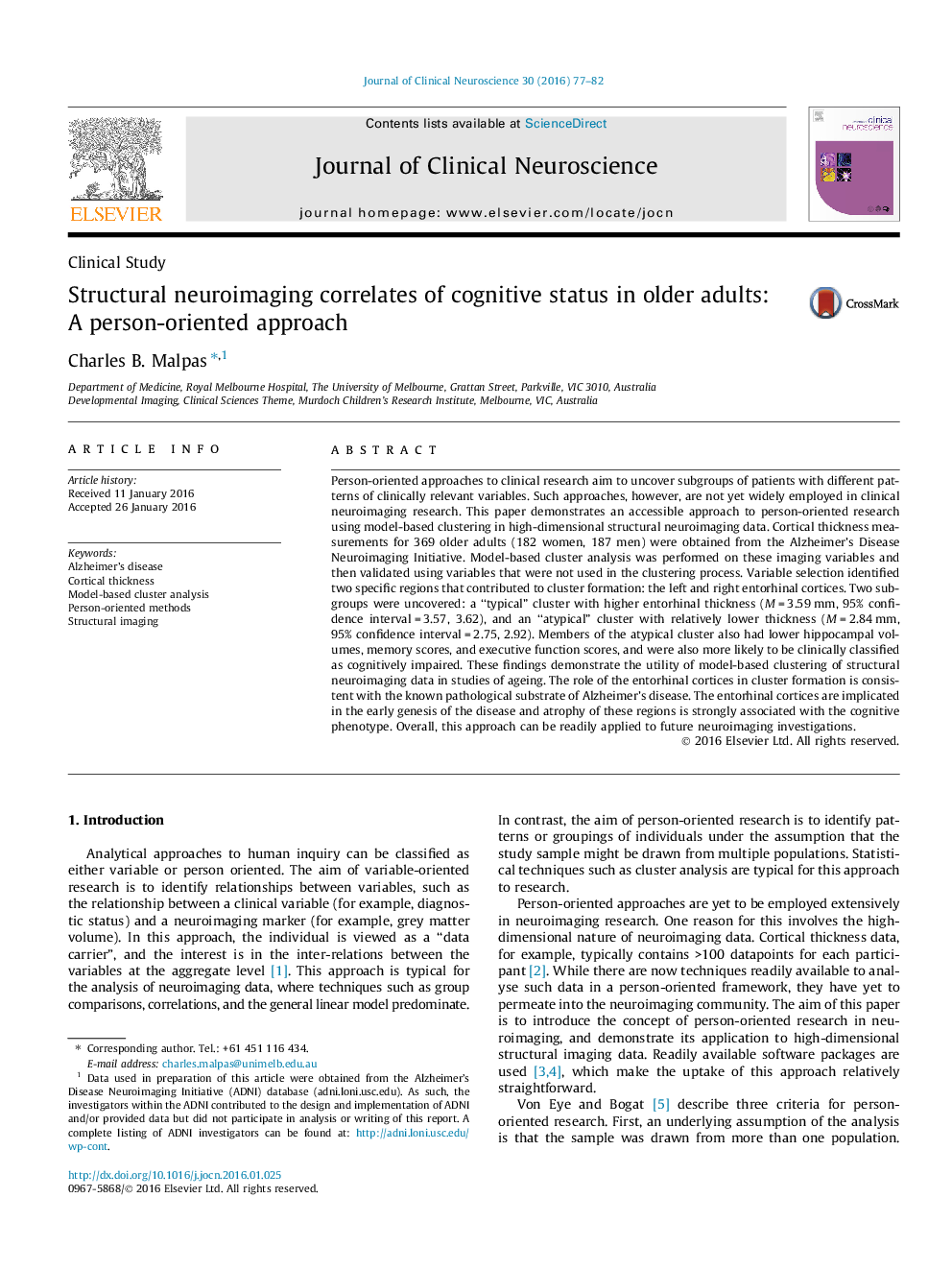| کد مقاله | کد نشریه | سال انتشار | مقاله انگلیسی | نسخه تمام متن |
|---|---|---|---|---|
| 3058143 | 1580286 | 2016 | 6 صفحه PDF | دانلود رایگان |
• Person-oriented approaches aim to uncover distinct subgroups of patients.
• Model-based clustering of cortical thickness data for 369 older adults identified two distinct clusters.
• Only the left and right entorhinal cortices contributed to cluster formation.
• Members of the “Atypical” cluster had thinner entorhinal cortices, and lower hippocampal volumes, memory and executive function scores.
• Members of the “atypical” cluster were more likely to be diagnosed with a cognitive impairment.
• These results demonstrate an accessible method for cluster analysis with high-dimensional neuroimaging data.
Person-oriented approaches to clinical research aim to uncover subgroups of patients with different patterns of clinically relevant variables. Such approaches, however, are not yet widely employed in clinical neuroimaging research. This paper demonstrates an accessible approach to person-oriented research using model-based clustering in high-dimensional structural neuroimaging data. Cortical thickness measurements for 369 older adults (182 women, 187 men) were obtained from the Alzheimer’s Disease Neuroimaging Initiative. Model-based cluster analysis was performed on these imaging variables and then validated using variables that were not used in the clustering process. Variable selection identified two specific regions that contributed to cluster formation: the left and right entorhinal cortices. Two subgroups were uncovered: a “typical” cluster with higher entorhinal thickness (M = 3.59 mm, 95% confidence interval = 3.57, 3.62), and an “atypical” cluster with relatively lower thickness (M = 2.84 mm, 95% confidence interval = 2.75, 2.92). Members of the atypical cluster also had lower hippocampal volumes, memory scores, and executive function scores, and were also more likely to be clinically classified as cognitively impaired. These findings demonstrate the utility of model-based clustering of structural neuroimaging data in studies of ageing. The role of the entorhinal cortices in cluster formation is consistent with the known pathological substrate of Alzheimer’s disease. The entorhinal cortices are implicated in the early genesis of the disease and atrophy of these regions is strongly associated with the cognitive phenotype. Overall, this approach can be readily applied to future neuroimaging investigations.
Journal: Journal of Clinical Neuroscience - Volume 30, August 2016, Pages 77–82
